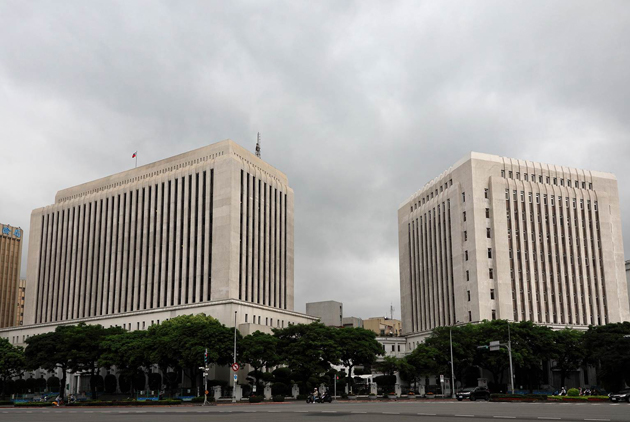Rocketing housing price and zombie companies in Taiwan – blame the low interest rates

Source:Pei-Yin Hsieh
What price does Taiwan have to pay for the central bank’s past 20 years of stimulative monetary policy? Three Central Bank directors jointly wrote a book that reveals the adverse effects of monetary policy under former Central Bank Governor Perng Fai-nan on Taiwan’s economy.
Views
Rocketing housing price and zombie companies in Taiwan – blame the low interest rates
By Chen Hung-yuFrom CommonWealth Magazine (vol. 721 )
When did the Taiwanese become poor abroad and wealthy at home?
In global comparison, Taiwan’s political and economic development over the past 70 years probably most resembles that of neighboring South Korea. Which country boasts the higher GDP? Or should we be asking whose citizens live a more affluent life? The answer to that question is not as simple as many might think.
International Monetary Fund (IMF) statistics show that Taiwan’s nominal GDP per capita stood at US$25,000 in 2018, giving it rank 39 worldwide, whereas South Korea was ranked 31 with a nominal GDP per capita of US$31,300. Yet if we look at what this means in terms of purchasing power, we get a vastly different picture. Taiwan soars to rank 17, far ahead of South Korea in rank 29, with purchasing power parity coming in at US$53,000 and US$41,400, respectively.
In a nutshell, the South Koreans make more money than the Taiwanese but the Taiwanese can afford a more lavish lifestyle than the South Koreans if we assume that all income is spent at home and not on traveling abroad.
This disparity has not been there from the beginning but has evolved over time.
Taiwan led South Korea in the 1980s and 1990s both in terms of nominal GDP per capita as well as purchasing power parity. But from 2003 Taiwan’s Central Bank began to keep the exchange rate for the New Taiwan dollar down [to boost exports, which are a main driver of the economy]. While this did in fact spur economic growth, it also meant that, when people exchanged the local currency into U.S. dollars, they were shortchanged in comparison to international exchange rates.
Keeping the local currency low to benefit one’s own economy actually leads to the reallocation of income as exports become more competitive and imports more expensive. Exporters are effectively subsidized while importers and consumers who buy imported products or travel abroad are being taxed.
What kind of investments are stimulated by super low interest rates?
A comparison of overnight call-loan rates in industrialized countries shows that from 2001, probably only Japan had even lower interest rates in the long run than Taiwan.
Between 2008 and 2016, as the global economy remained sluggish in the wake of the financial crisis, interest rates kept hovering around zero percent in many countries. But after 2016 and before the COVID-19 pandemic hit last year, the United States and Singapore slowly adjusted their interest rates upward. Taiwan, however, kept them near zero percent. During the past two decades, South Korean interest rates were on average more than two percentage points above Taiwan’s.
In Taiwan, these near-zero interest rates have long become the new normal. And over the past 20 years, they have gradually changed Taiwan’s economic condition at a high cost to society.
 (Source: Pei-Yin Hsieh)
(Source: Pei-Yin Hsieh)
Recent studies found that low interest rates are to blame for rising housing prices.
Taiwan has so far been spared an economic recession caused by an asset bubble comparable to Japan’s “bubble economy”. But in recent years, vocal warnings that real estate prices in Taiwan are inflated have never died down. Housing prices exploded in the period between 2002 and 2014. This real estate boom happens to coincide with a steep decline of Taiwan’s overnight call-loan rate.
The low interest rates not only led to a higher house price-to-income ratio, they also distorted investment behavior.
Interest rate below 2.6% fails to stimulate investment in production
Lin Hsin-yi, professor at the Department of Economics of National Chengchi University, notes that an analysis of Taiwan’s economic data between 1982 and 2016 shows that lowering interest rates at a time when they are rather high does, of course, foster private-sector investment. But when the interest rate level is already below 2.6 percent, further interest rate cuts will not make companies more inclined to invest.
Between 2000 and 2018, the share of investment in machines and equipment dropped from 45.4 percent in 2002 to 32.23 percent, while the amount spent remained about the same. In contrast, the amount spent on real estate (residential and non-residential) more than doubled. This means that a large amount of money has flowed into the real estate market in the past two decades.
 (Source: Pei-Yin Hsieh)
(Source: Pei-Yin Hsieh)
Twenty years ago, housing prices stood at just one third of current price levels. Given that young people cannot afford to buy their own home, there is a generational wealth gap opening up in Taiwan. Since the real estate sector has become a bigger part of the national economy, we often hear that it acts as “an economic growth engine”. The typical reasoning is that young people’s rights are being sacrificed for the sake of economic growth. But in reality, the interindustry linkages, a measure to identify key industries, of the real estate industry are lower than those of Taiwan’s real growth engines – the chemical, metal and electrical equipment industries.
The persistently low interest rates have also led to an increase in so-called “zombie companies”. The term describes enterprises that earn just enough money to keep them afloat and repay interest on their debt but are not able to repay the principal. Many zombie companies just scrape by or need bailouts to continue operating. Against such a backdrop, they are unable to set goals other than repaying debt, making it very difficult for them to achieve any technological or innovative breakthroughs.
The ratio of companies that are listed on the Taiwan Stock Exchange (including emerging stock board) and older than 10 years, but have not been able to repay interest on their debt for three years in a row, stood at 5.9 percent in 2007. In 2015 that figure had risen to 9.2 percent, while slightly falling to 8.5 percent in 2018. The same had happened in Japan, before the bubble burst.
Have you read?
♦ Why Hong Kongers Are Moving to this Town in Central Taiwan
Translated by Susanne Ganz
Edited by TC Lin
Uploaded by Penny Chiang






